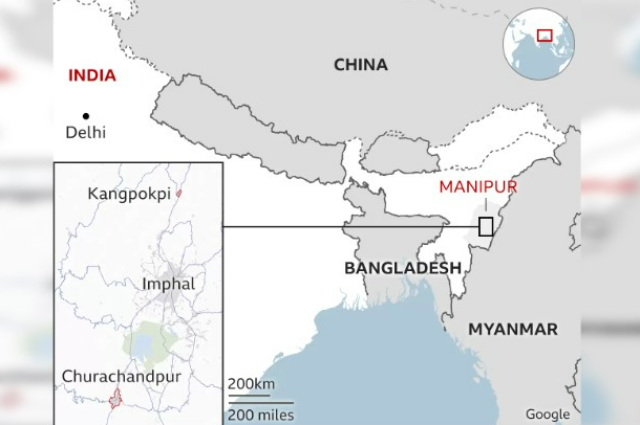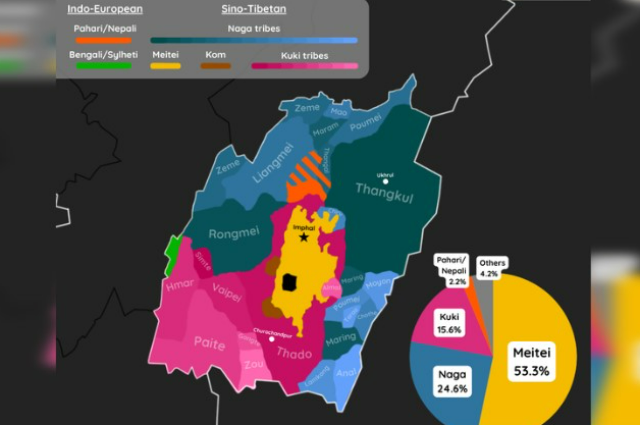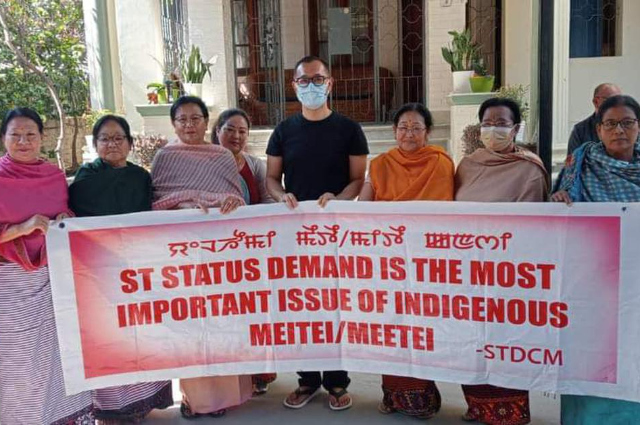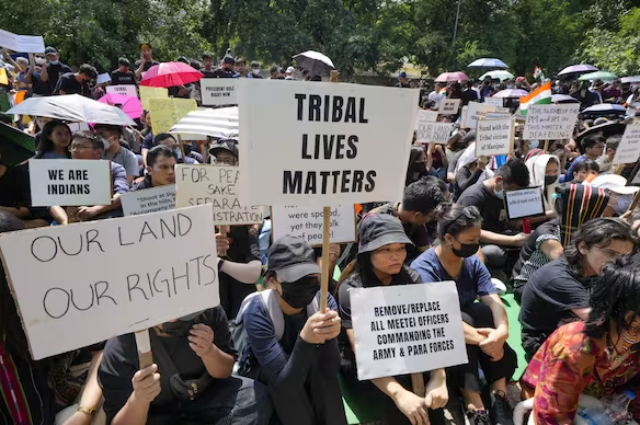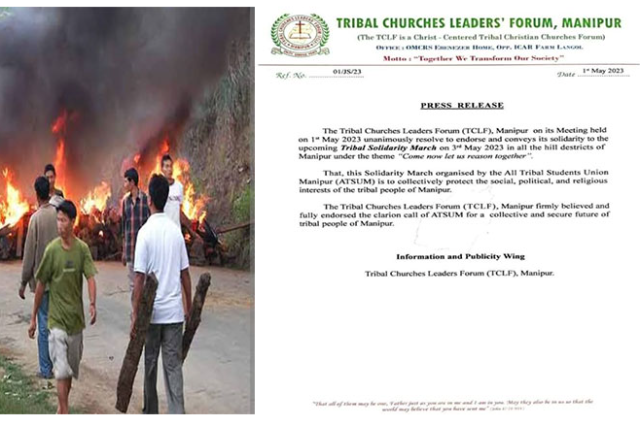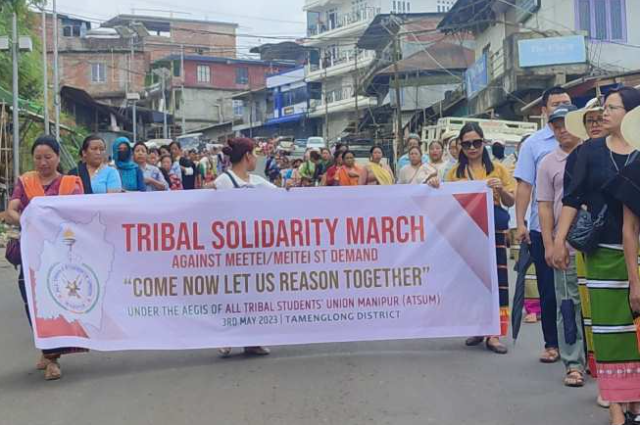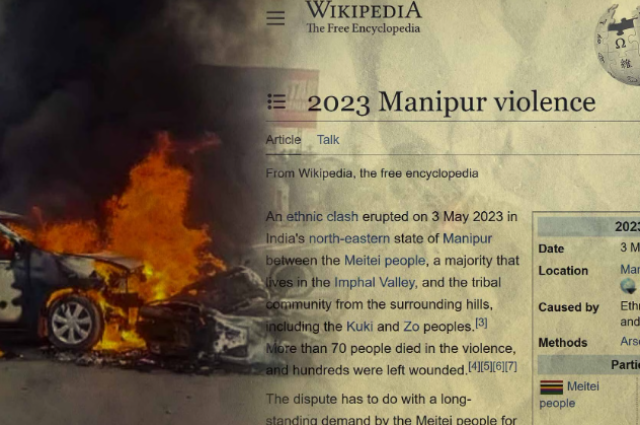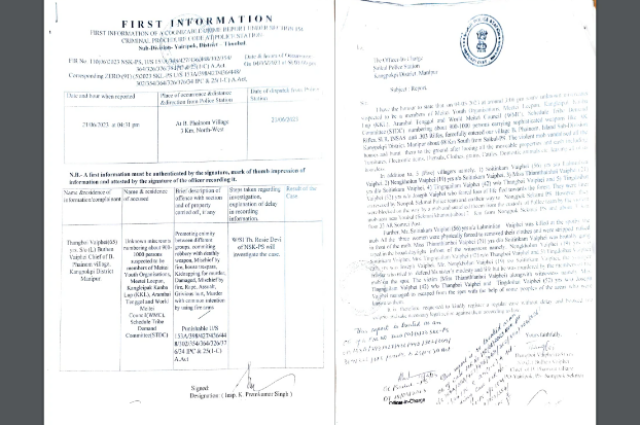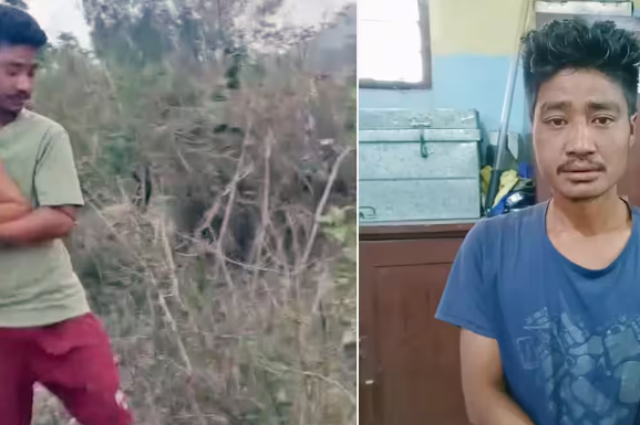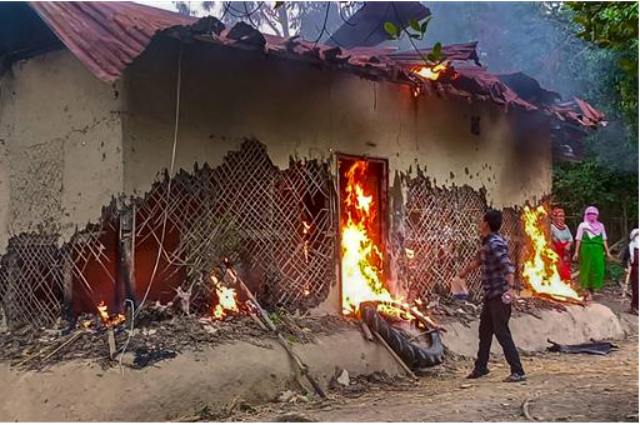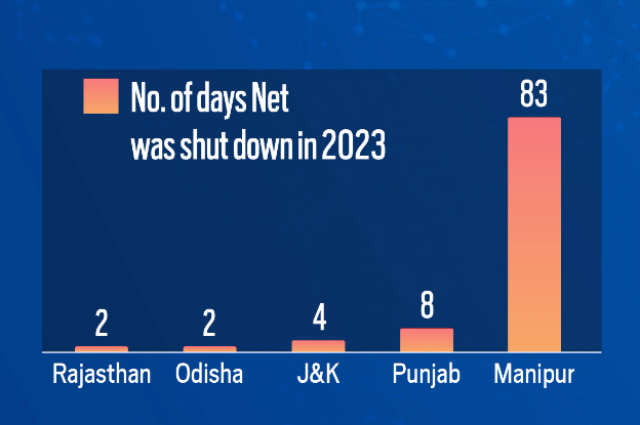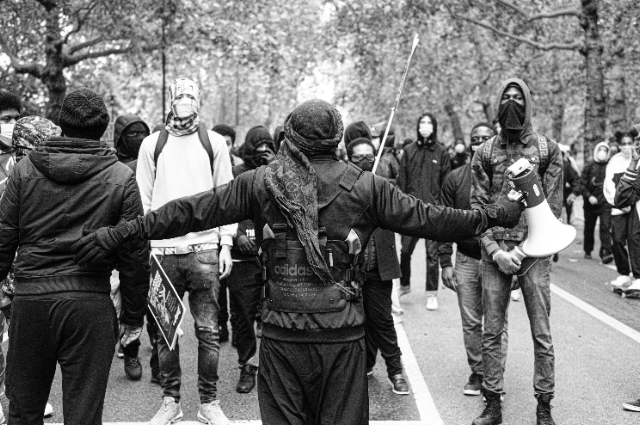
Photo by Ehimetalor Akhere Unuabona on Unsplash
I firmly believe today that the only way to stop violence against women is to speak out and refused to be silenced! - Zainab Salbi, Iraqi American women's rights activist
With fury coursing through my veins, my trembling hands clenched in anger, and tears stream uncontrollably down my cheeks, as if they possess a will of their own. There are no words left to debate the obvious truth: society's treatment of women, like an incessant dance between oppression and conflict, is the root of all woes. We, the women, are relegated to mere props on this stage of life, devoid of dignity and seen merely as objects to be manipulated.
But hear me, I am more than a puppet! I, too, possess a soul that longs to soar free, and a life that yearns to be lived on equal.
My heart bleeds, witnessing the injustices around me, and I find no outlet for my seething rage.
In this sea of turmoil, my pen becomes my only weapon, and the social media my battlefield, where I wield my words like swords to pierce the darkness and pierce the callous hearts of those who perpetuate this injustice.
Yeah, in this article, as a woman representative investigating the Manipur violence issue, I shall passionately unveil the depths of my emotions and righteous indignation concerning the events that have transpired.
BACKGROUND
Who are Kukis?
Kukis are an ethnic community living in various states of Northeast India, including Manipur, Mizoram, Meghalaya, Assam, Tripura, and Nagaland. They are one of the many hill tribes found in this region, as well as in Bangladesh and Myanmar. While they inhabit all Northeastern states except Arunachal Pradesh, their main stronghold is in Churachandpur, with significant populations in other districts of Manipur like Chandel, Kangpokpi, Tengnoupal, and Senapati. Historically, the Kuki people are believed to have originated from the Mizo Hills in Mizoram.
The Kukis have diverse religious practices, including animism, which involves venerating their ancestors. They perform rituals, such as animal sacrifices and ancestor worship, as well as celebrate festivals to honor their deities. Over time, many Kukis converted to Christianity, particularly Protestantism, due to the influence of Christian missionaries during the late 19th and early 20th centuries. Today, Christianity is the primary religion among the Kukis, while some still follow animism, Judaism, or Islam.
Who are Meities?
Meiteis, also known as Meetei, form the dominant ethnic group in Manipur, India's North Eastern state. They predominantly inhabit the Imphal Valley region of Manipur, but a substantial Meitei population is found in other Indian states like Assam, Tripura, Nagaland, Meghalaya, and Mizoram. According to the 2011 Census, Meiteis constitute about 53 percent of Manipur's population. Their language, Meitei or Manipuri, belongs to the Tibeto-Burman language sub-family and gained recognition as one of India's official languages in 1992.
As for their religious beliefs, the majority of Meiteis practice Hinduism, while a significant portion follows the Sanamahi religion, named after the god Sanamahi. Additionally, a smaller percentage of Meiteis adhere to Islam.
Geographic Disparities and Division in Land Distribution
One of the key factors contributing to the ethnic conflict in Manipur is the stark geographic disparities in land distribution across the state. The Meitei community, concentrated in the valley regions, occupies only a small fraction of Manipur's total land area, comprising approximately 10% of the state's territory. In contrast, the Kuki and other tribes are spread across the hilly and less developed areas, encompassing a larger portion of the land.
This unequal distribution of land and resources has deep historical roots. The historical patterns of settlement, land ownership, and administrative decisions during colonial and post-colonial eras have contributed to the present-day disparities. The concentration of resources and development in the valley regions, where the Meiteis reside, has fueled perceptions of neglect and marginalization among the hill-dwelling communities.
As a result of these disparities, a palpable divide has emerged between the valley-dwelling Meiteis and the hill-dwelling Kuki and other tribes. The geographic separation has led to distinct economic and social realities, with varying access to education, healthcare, and infrastructure between the two regions. Such inequalities have intensified feelings of alienation and resentment among the marginalized communities, fuelling demands for greater autonomy and self-governance.
The geographic divide also influences the political dynamics of Manipur. Political representation and decision-making processes have often been centered around the interests of the dominant Meitei community, leaving the concerns of the hill-dwelling tribes inadequately addressed. This perceived lack of representation and inclusion in governance has further exacerbated tensions and created a sense of disenfranchisement among certain communities.
Ethnicity vs. Religion in the Conflict
Despite a surface-level assumption that religious differences might underpin the conflict, the reality is far more nuanced. While the Meiteis predominantly practice Hinduism and the Kukis lean towards Christianity, the conflict's primary drivers are ethnic and territorial in nature. It is the struggle for recognition, power, and control over resources that fuels the flames of discontent, overshadowing any religious fault lines. This insight underscores the complexities of the conflict and highlights the imperative for nuanced, identity-sensitive approaches to conflict resolution.
Non-Convincing War - Demand for Scheduled Tribe Status
The ongoing conflict between the Meiteis and the 'tribals' in Manipur is an extension of the historical hills-versus-plains divide seen in other regions of the northeast. The Kukis and Nagas, who predominantly inhabit the hills, have expressed grievances about the uneven distribution of development benefits, which they believe primarily favor the Meitei-inhabited areas in the Imphal valley. One of the central points of contention is related to the reservation system in the state, where 40 out of the total 60 seats in the state assembly are reserved for Meiteis, despite them comprising only half of the population.
THE RIOT
The Riot Begins...
The riot did not initiate on May 4th; instead, it has been persisting for almost a decade. However, the outbreak actually commenced on April 19th.
The Overall Conflict Scenario:
Over the course of the past decade, a longstanding division in Manipur has resurfaced, leading to violent protests in response to a high court directive urging the state government to consider including Meiteis in the Scheduled Tribes category. Meiteis constitute approximately 53% of the state's total population, yet they occupy only around 10% of the land area in Manipur. If Meiteis are granted ST status, they will gain the ability to purchase land in the hill areas, which are primarily inhabited by tribal communities. As a result of this contentious issue, clashes between tribal groups and Meiteis have been reported in various regions, particularly in Imphal, Churachandpur, and other areas. The Meitei ethnic group holds a dominant position in Manipur, while the Kuki tribe is one of the largest tribal communities.
On April 19: The high court's decision became fuel to the conflict
This conflict came to the forefront once again when the Manipur High Court acted on a petition by the Meiteis and instructed the state to consider including them in the Scheduled Tribes (STs) category. The Kukis and Nagas vehemently oppose granting ST status to Meiteis, fearing that it would further exacerbate the existing disparity. They argue that Meiteis already enjoy better representation in various spheres, including jobs, government positions, and economic status, compared to the tribal communities.
On the other hand, the Meiteis assert that they have been unjustly excluded from the ST list, despite historically being considered tribal people even before Manipur's integration into India in 1948. The denial of ST status has placed them in a disadvantaged position, especially concerning land ownership. As non-tribal individuals, both Meiteis and others are restricted from purchasing land in the hill districts where the tribals reside. However, the tribals face no such restrictions and can freely acquire land in the Meitei-inhabited areas.
The demand for ST status by the Meiteis is fueled by the belief that attaining this designation would rectify the inequalities they face and provide them with access to land in the hill districts. This becomes particularly crucial as they express concerns about being outnumbered due to the influx of illegal immigrants from Myanmar into the valley, which further intensifies the complexity of the reservation controversy.
The reservation issue intertwines with historical grievances and deep-rooted socio-economic disparities, making it a complex and sensitive matter in Manipur. As the debate rages on, finding a fair and equitable solution that addresses the concerns of all parties involved remains a significant challenge for the state government and policymakers.
Call for Protest:
The situation escalated when tribal groups in Manipur called for a 12-hour shutdown to protest against the state government's survey on reserved forests/protected forests and the eviction of villages during Chief Minister Biren Singh's visit to Churachandpur on April 28. In addition to this, tribal bodies expressed their dissatisfaction following the demolition of churches in Imphal during an eviction drive conducted by the state government last month. The prominent hill tribes of Manipur, namely the Kukis and Nagas, are primarily Christians, which has further contributed to the complexity of the ongoing tensions.
On April 27th:
One day prior to Chief Minister Biren Singh's scheduled visit to Churachandpur, the open gym that he was set to inaugurate was deliberately set on fire.
On April 28th:
In response to the escalating situation, Section 144 of the Criminal Procedure Code was imposed, restricting public gatherings, and internet services were suspended for a five-day period. Tensions escalated as protesters clashed with security forces, leading the police to use tear gas shells to disperse the crowd. Despite the Indigenous Tribal Leaders Forum (ITLF) agreeing to withdraw the protest, police forces remained in the district. In the Tuibong Bazar area, a mob gathered and resorted to burning tires on the roads.
On May 3rd:
The situation further intensified when the All Tribal Students Union of Manipur (ATSUM) called for a Tribal Solidarity March to protest the inclusion of Meiteis in the Scheduled Tribe (ST) category.
The rally in the Torbung area of Churachandpur saw an estimated attendance of over 60,000 people. During the rally, violence erupted, resulting in nearly 11 civilians being injured, and two others losing their lives to bullet wounds in the Kangpokpi district's Saikul area.
Amid the clashes between Meiteis and tribal protesters, state security forces rushed to the scene, and prohibitory orders were issued in eight districts. Furthermore, amidst the ongoing protests, images surfaced on social media depicting civilians carrying sophisticated weapons like AK-47s. Sources claimed that these protesters were members of a suspended Kuki tribal militant group, although the authenticity of this claim is yet to be verified.
On May 4th:
The violence spread to Imphal, where fresh incidents of vandalism, property destruction, and clashes between Meiteis and tribal groups were reported. In response, the Rapid Action Force, along with the Army, CRPF, Assam Rifles, and state police, was deployed to contain the violence.
On the same day, the government issued a "shoot at sight" order in extreme cases where all forms of persuasion, warning, and reasonable force had been exhausted and the situation was uncontrollable.
As the situation worsened, security forces managed to rescue around 9,000 people from the violence-affected areas, providing them with shelter. A defense spokesperson stated that more people were being relocated to safer places.
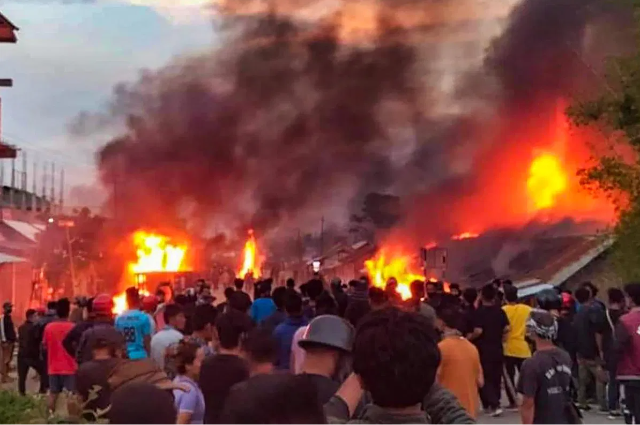
Breaking News: After unprecedented 77 days on 19 July, a world-shaking 26 sec video have been released, leaving people worldwide shocked and ashamed. The event has led to a loss of prestige for India.
What happened on 19-21 July? - Unfolded
Happenings on 19th July: The shocking video released
A video lasting 26 seconds, originating from Manipur, caused widespread anger across the nation as it depicted a distressing incident where a mob stripped naked, assaulted, and paraded two women. Reportedly, this event occurred on May 4, shortly after ethnic clashes erupted in Manipur.
FIR LOOKUP OF THE VIRAL VIDEO: Parading and Assault of Kuki Women in Manipur
Date of Incident: May 4
Complained date: May 5
Complainant: Thangboi Vaiphei, Chief of B. Phainom village
Date of FIR Filing: June 21
Location: Saikul Police Station, Kangpokpi District, Manipur
- Description of Incident: A large mob of armed men, mainly from the Meitei community, attacked B. Phainom village on May 4, 2023. The attackers looted homes, stole valuables and gadgets, and set houses on fire. Five villagers sought refuge in the forest due to fear for their lives. However, they were later intercepted by the Nonpok Sekmai police team, and while being taken to the police station, they were snatched away from the police by the mob. The incident resulted in the death of one person, and three women were subjected to strip naked and gang-raped in broad daylight by some members of the mob. The complaint also mentioned that the murdered person was the brother of one of the women who tried to protect her, and another male family member, aged 56, was also killed by the mob. One of the victims seen in the video is the wife of an ex-army man, who had served as a subedar in the Assam Regiment and had previously fought in the Kargil War. The incident was reported to Saikul Police Station on June 21, bringing the incident to the attention of the authorities.
- Victim Testimony: According to the victims' harrowing account, they were forced to remove their clothes under threats of death and were then made to walk naked in public. The attackers verbally abused them and subjected them to sexual assault. The assailants then led the victims into a field, where the sexual assaults continued. The survivors were later rescued and provided shelter in a refugee camp.
- Charges Filed: The case has been registered under various sections of the Indian Penal Code, including Sections 153A (promoting enmity between different groups on grounds of religion, race, etc.), 398 (attempt to commit robbery), 427 (mischief causing damage), 436 (mischief by fire or explosive substance with intent to destroy a house), 448 (house-trespass), 302 (murder), 354 (assault or criminal force to woman with intent to outrage her modesty), 364 (kidnapping or abducting in order to murder), 326 (voluntarily causing grievous hurt by dangerous weapons or means), 376 (rape), and 34 (common intention). Additionally, charges under Section 25(1C) of the Arms Act have been included.
- Perpetrator Information: The investigation is ongoing to ascertain the identities of the perpetrators and bring them to justice (as per the FIR stated on that day).
FIR LOOKUP OF CASE 2 ON THE SAME DAY: Rape and Murder of Two Women Near Konung Mamang, Manipur
Date of Incident: May 4
Complained date: May 5
Complainant: One of the victim's mother, B. Phainom village
Date of FIR Filing: May 16
Location: Saikul Police Station, Manipur
- Description of Incident: On May 4, another disturbing incident occurred in Manipur where a tribal woman lodged a complaint with Saikul Police Station. She reported that her 21-year-old daughter and her 24-year-old friend were allegedly raped by a mob at their rented house near Konung Mamang. The assailants subsequently brutally murdered both victims.
- Occupation of Victims: The victims were employed as caretakers at a car washing station in the area where the incident took place.
- Victim Status: As of the time of the FIR filing, the bodies of the victims have not been recovered, and their fate remains a matter of concern and investigation.
- Charges and Sections Invoked: The police have registered a case under various sections of the Indian Penal Code, including 153A (promoting enmity between different groups), 398 (attempt to commit robbery), 436 (use of fire or explosives to destroy a house), and 448 (house-trespass). Additionally, a section of the Arms Act has been invoked in connection with the incident.
- Perpetrator Information: The identity of the mob responsible for the rape and murder of the victims is under investigation, and efforts are underway to identify and apprehend the perpetrators.
Statement by Manipur Police immediately after the video went viral
Date: July 19, 2023
- Current Situation: The Manipur Police issued a statement regarding the ongoing violence and the viral video related to the incident. As of the last 24 hours preceding the statement, the state has been peaceful, though tense, with sporadic incidents of arson and crowd gatherings.
- Investigation Status: The police acknowledged that the FIR regarding the incident had been registered and clarified that the case is currently under investigation. However, no culprits have been apprehended yet.
- Curfew Status: Due to the ongoing violence, the curfew relaxation has been curtailed in five valley districts and Churachandpur.
- Arrests and Search Operations: The police reported installing 126 checkpoints in different districts and arresting 452 individuals so far in connection with the violence. The police also appealed to the general public to assist them and provided a toll-free number (9233522822) to provide information, seek help, or report illegal arms, ammunition, and explosives.
- Government Order to Social Media Platforms: The government has issued an order to social media platforms, including Twitter, instructing them not to share the viral video depicting the two Manipuri women being paraded nude. The reason for this order is that publicizing the identity of victims of sexual crimes is a punishable offense under Indian law.
Happenings on 20th July: Leaders' words on the issue and arrests
16:06 (IST): Manipur CM considers Capital Punishment for those involved.
16:09 (IST): Opposition Criticizes PM Modi’s Reaction on Manipur Video
16:24 (IST): Government Directs Social Media Platforms to Remove Manipur Video
16:28 (IST): Meghalaya CM Calls Manipur Incident 'Demeaning'
16:33 (IST): Mamata Banerjee Calls for Condemnation of Inhumane Actions
16:47 (IST): Irom Sharmila Expresses Grief Over Manipur Incident
17:34 (IST): Understanding Section 69 (A) and Its Role in Manipur Video Removal
17:39 (IST): One Arrest Made in Manipur Sexual Assault Case
18:08 (IST): Nation Expresses Shame Over Manipur Sexual Assault
18:19 (IST): Survivor's Account: Woman Stripped and Raped in Manipur speaks
18:24 (IST): PM Modi's Silence Criticized by Arvind Kejriwal
18:36 (IST): Bengal CM Mamata Banerjee's Views on Manipur Situation
18:44 (IST): US Singer Mary Millben Acknowledges PM Modi's Statement on Manipur
18:59 (IST): Mamata Banerjee Calls for an End to Anarchy in Manipur
19:11 (IST): Manipur Governor Seeks Answers on Lack of Action
19:32 (IST): Opposition Pushes for Discussion on Manipur Issue in Parliament
19:48 (IST): Rahul Gandhi Urges PM Modi to Stop Violence in Manipur
20:11 (IST): CPI MP Writes to PM, Calls for Action on Manipur Incident
20:18 (IST): TMC Team Labels Manipur Incident as 'Most Horrific Killings'
20:31 (IST): CM N Biren Singh Confirms 2 Arrests in Manipur Video Case
21:12 (IST): Mizoram Women's Organisation Appeals for NHRC Action on Manipur Horror
21:16 (IST): TMC Team Calls Manipur Incident 'Most Horrific Killings'
21:47 (IST): Four Arrested as Video of Sexual Assault Sparks Outrage
Happenings on 21st July:
07:10 (IST): Rape FIR Neglected During High-Level Meetings
07:19 (IST): Understanding Section 69 (A) and Its Role in Manipur Video Removal
7.52 (IST): Amit Shah to Discuss Manipur Issue in Lok Sabha Session
10:05 (IST): Village Women Set Fire to House of Accused in Sexual Assault Video
10:54 (IST): Nation Expresses Shame Over Manipur Sexual Assault
10:59 (IST): A few hours following his apprehension, the residence of Huirem Herodas Meitei, the main suspect in the Manipur sexual assault video incident, was set ablaze by a gathering of women in his village.
11:40 (IST): Manipur Issue Stirs Maharashtra Assembly
12:35 (IST): Mayawati Finds Incident Heart-Wrenching, Criticizes Political Bickering
13:02 (IST): NCW Chief Reports Lack of Response from Manipur Authorities
13:24 (IST): Rajnath Singh Assures Government's Willingness to Discuss Manipur Issue
14:08 (IST): Mamata Questions PM Modi's Reaction to Manipur Incident
14:18 (IST): CM Biren Singh Avoids Commenting on Resignation
15:23 (IST): Derek O'Brien Demands Full Record of July 20 Speech on Manipur
15:26 (IST): BJP MP Sushil Modi Accuses Opposition of Avoiding Manipur Discussion
15:31 (IST): CM Biren Singh Defends Manipuri Culture and Values
15:43 (IST): BJP MP Locket Chatterjee Condemns Manipur Violence, Recounts Similar Incident
16:08 (IST): Village Women Set Fire to House of Prime Accused
16:34 (IST): Priyanka Chaturvedi Calls for PM's Presence and Discussion in Parliament
16:45 (IST): Nana Patole Criticizes PM Modi's Lack of Concern Over Manipur Violence
16:58 (IST): Assam MLA Akhil Gogoi Calls for President's Rule in Manipur
18:04 (IST): Four Accused in Sexual Assault Case Remanded to Police Custody
18:08 (IST): Shiv Sena (UBT) Demands Biren Singh's Dismissal and President's Rule
18:31 (IST): Mehbooba Mufti Criticizes BJP on Manipur Sexual Assault Case
18:33 (IST): Omar Abdullah Targets BJP Leader Dilip Ghosh Over Manipur Incident
18:55 (IST): Letters to Manipur Officials on Violence Against Women Ignored
20:37 (IST): Tribal Organisations March in Ranchi to Protest Manipur Sexual Violence
21:39 (IST): Citizens Take to Streets in Protest Against Manipur Sexual Violence
As of July 30, 2023, a total of seven perpetrators have been apprehended, and among them is one juvenile, which remains a distressing and disheartening aspect of the situation. The cse have been handed over to CBI for further investigation. The arrested culprits have been on a 11 day custody.
Questions Arise on the Issue
(Unanswered Concerns Surrounding the Disturbing Incident)
Why the video has not been released for 77 days?
The delay in the release of the video showing the incident of two Kuki women being paraded naked and sexually assaulted in Manipur can be attributed to the suspension of internet services in the state. The incident occurred on May 4, but the video only came to light on social media after a significant delay of 77 days, specifically on July 19.
The reason for the delayed release lies in the government's decision to suspend internet services in Manipur, which was implemented as a precautionary measure to control the volatile situation in the region.
To prevent the spread of disinformation, false rumors, and any content that could escalate tensions and create law and order issues, the state home department took the measure of suspending internet services. This suspension affected various social media platforms such as Whatsapp, Facebook, Instagram, Twitter, and others.
The authorities were concerned that anti-social elements might exploit social media to disseminate inflammatory content, hate speech, and provocative videos that could incite violence and worsen the situation. As a result, the ban on internet services was repeatedly extended to ensure stability and avoid any potential misuse of digital platforms during the period of unrest.
It was not until July 7 that the Manipur High Court intervened and directed the state government's Home Department to lift the ban on providing internet services through dedicated Internet Lease Lines (ILLs). The court's decision was to restore limited access to ILLs, which are dedicated internet connections typically used by enterprises, businesses, and institutions.
The limited restoration of internet connectivity allowed the video of the Manipur incident to surface on social media platforms after the long delay. Subsequently, the content in the video garnered widespread attention, leading to outrage across the nation.
Was the internet shutdown really helped to control violence?
Never, it is a flawed approach to tackle fake news and violence which fueled the issue.
One of the justifications behind internet shutdowns is to prevent the spread of fake news and violent incidents that could further escalate tensions. However, this approach fails to effectively address the issue, as internet shutdowns impede the flow of accurate information while allowing misinformation to thrive.
- The Impact of Internet Shutdowns:
Democracy thrives on access to information, yet internet shutdowns severely restrict this access, posing a threat to democratic principles. One impactful video has already demonstrated how vital information can be concealed, and if such suppression continues, the consequences could be even more dire. Internet shutdowns not only obscure violence but also enable authoritarian tendencies within the government.
- Censorship in Manipur: Controlling Information Flow
The violence in Manipur must be curtailed, but instead of tackling the core issue, the focus seems to be on controlling the information coming out of the region. Both the Government of India and Manipur share the responsibility for actively censoring media and the internet in the state, leading to unchecked actions by the executive. Even statements from Manipur's police force lack credibility due to accusations of dereliction of duty and weapon looting among officers.
- Internet Shutdowns: A Counterproductive Strategy
Temporary internet shutdowns in conflict zones may temporarily stop the spread of viral information, but prolonged shutdowns hinder genuine news reporting. Manipur's government appears to operate as if in a state of war, disregarding democratic norms and failing to address the underlying issues.
- Legal Stand and Partial Restoration of Internet Access
The Supreme Court of India has declared internet shutdowns to be a violation of freedom of expression. Despite this ruling, there has been silence on the continuous violations of this judgment. The High Court of Manipur has ordered a partial restoration of the internet, but resistance from the Home Ministry of Manipur hinders a complete return to fibre internet, with the need for pilot projects cited as a reason. The court is set to review this matter on July 25.
- Challenges in Restoring Internet Access
Restoring internet access in the hilly regions where the Kuki tribes reside presents challenges due to infrastructure limitations. Reports indicate a lack of private telecom towers and poorly maintained BSNL towers in Kuki villages, making the process time-consuming, even after violence is controlled. If internet access is eventually restored, it is likely to be done in a phased manner with strict conditions, which amounts to more censorship than access.
- Censorship Hindering Solutions in Manipur
This form of censorship does not effectively address the violence; instead, it allows the state to control the narrative and deny the existence of the problem in Manipur. Transparency and visibility are crucial for a potential political solution, which is obstructed by the ongoing internet shutdowns. The hope remains that opposition political parties will pressure the Government of India to restore internet access in Manipur and facilitate progress in the region.
What about the phone used to record video?
According to the police, a cell phone was found in the possession of one of the six arrested individuals, and they suspect that this phone was used to record the video. The identity of the person who recorded the video has not been disclosed by the police yet. The cell phone is expected to be a crucial piece of evidence in the ongoing investigation.
What happened to the two women in the video?
The authorities ensured the safety and well-being of the affected individuals by accommodating them at a relief camp. In the relief camp, they were provided with the necessary support, including food, shelter, and medical assistance, to help them cope with the traumatic experience they had gone through. The officials made every effort to create a secure environment for those seeking refuge, offering them a place of solace and protection during their distressing times. The victims and their families were closely monitored and cared for, with the authorities striving to address their immediate needs and alleviate their suffering as much as possible. The presence of trained personnel and volunteers at the relief camp further contributed to the emotional and physical support extended to the survivors, ensuring that they were not only kept safe but also treated with compassion and empathy. The relief camp played a crucial role in providing a temporary haven for these individuals, allowing them the space and time to begin healing from the harrowing events they had endured.
What actions did the police take when the incident happened?
On the day of the horrifying incident in Manipur's Kangpokpi district, when the mob attacked the village of B Phainom, the police were reportedly present at the Nongpok Sekmai police station, guarding it as it was being mobbed by people attempting to loot arms. Due to this situation, the police claimed they could not take immediate action in response to the gruesome attack on May 4.
According to the village chief, Thangboi Vaiphei, frantic calls were made to the local police station when the violence erupted, but there was no response. The mob went on to plunder the village, forcing most of the residents, including the three women and their two male relatives, to flee into the jungles to seek safety.
The family was later rescued by a police team from the Nongpok Sekmai police station, located 2km away, but tragically, the mob intercepted them and snatched the victims from police custody. The mob then proceeded to attack and assault the women, parading them naked in a horrific display of violence. One of the women was also gang-raped, and her 19-year-old brother was killed for trying to intervene. The village chief's complaint, filed as a "zero FIR" on May 18 but forwarded to the appropriate police station only on June 21, detailed the harrowing events of that day.
While the police had faced challenges in responding to the escalating violence during the initial attack, authorities later took action, and on July 20, over two months after the incident occurred, four people were arrested in connection with the case, following the viral video on social media. The Manipur governor expressed strong condemnation, and the chief minister vowed to seek exemplary punishment, including the death penalty, for the accused perpetrators of this heinous crime.
Putting an End to Treating Women as Puppets
Rape is not a solution
The problem of rape is a deeply concerning and pervasive issue that has severe and long-lasting impacts on individuals and societies. It is important to acknowledge that rape is not a solution to any problem, and resorting to such heinous acts cannot be justified under any circumstance. Rape is a violent crime that violates a person's bodily autonomy, dignity, and human rights.
Rape is a manifestation of power, control, and dominance, rather than a means to solve problems. Perpetrators use sexual violence as a tool to instill fear, assert authority, or inflict harm on their victims. It is essential to understand that rape is never the victim's fault, regardless of the circumstances or context. Consent is a fundamental aspect of any sexual interaction, and without it, any sexual activity becomes an act of violence and a violation of human rights.
Don't treat women as a puppet - it won't be the right way to protest against a need
Absolutely, treating women as puppets for every problem is not only unjust and unethical but also counterproductive. It undermines the potential and capabilities of women and perpetuates harmful gender stereotypes. Women have proven time and again that they are capable of excelling in various fields, contributing significantly to society, and driving positive change.
Empowering women and promoting gender equality is not just a moral imperative; it is essential for the progress and development of any society. When women are given equal opportunities and treated with respect, they can unleash their talents and contribute meaningfully to the workforce, economy, and decision-making processes.
As a society, we must recognize that women are not passive bystanders but active agents of change. They possess unique perspectives, skills, and experiences that are valuable in solving complex problems and shaping a better future. By dismantling harmful gender norms and creating inclusive environments, we can unlock the full potential of women and promote a more equitable and prosperous society for all.
Women's empowerment is not about replacing men or competing with them; it is about creating a world where all individuals, regardless of their gender, have equal access to opportunities and resources. It is about building a society that celebrates diversity, values inclusivity, and recognizes the rights and dignity of every individual.
As we move forward, let us continue to challenge outdated beliefs and work towards a world where women are respected, empowered, and treated as equal partners in shaping the course of society. By doing so, we can foster a more just, compassionate, and progressive world for everyone.
Manipur issue and women's justice
The Manipur issue is indeed a significant and complex problem that reflects the complexities of human society and the challenges we face in addressing various social, political, and economic issues. It is essential to approach such conflicts with empathy, understanding, and a commitment to finding peaceful and constructive solutions.
Protests and movements are legitimate ways for people to express their grievances and demand their rights. However, resorting to violence and destructive actions not only perpetuates the cycle of harm but also undermines the legitimacy of the cause being fought for. It is crucial for individuals and communities to engage in peaceful dialogues, negotiations, and advocacy to bring about positive change and address the root causes of the issue.
Treating women with respect and dignity, as companions and equals, is a fundamental aspect of creating a just and harmonious society. Women are not objects to be controlled or manipulated; they are individuals with their own thoughts, emotions, and aspirations. Recognizing and valuing their agency is essential in fostering a culture of equality and promoting their well-being.
As we navigate the challenges of our era, it is imperative to strive for nonviolent and inclusive approaches to address issues and conflicts. Building a society where everyone's rights are respected, where dialogue and understanding prevail, and where women are treated as equals, is key to achieving a more harmonious and progressive world. Let us work together to cultivate empathy, compassion, and respect for one another as we collectively build a brighter future for all.
Laws specifically for women to complaint the issues:
- Section 376AB: This section deals with the offense of rape committed by a person in a position of authority or control over the victim, such as a public servant, a police officer, a member of the armed forces, or a hospital staff member. It provides for harsher punishment for such offenders.
- Section 354A: This section deals with sexual harassment and provides for punishment for acts like unwelcome physical contact, making sexually colored remarks, or showing pornography against the will of a woman, thereby violating her dignity.
- Section 376DA: This section pertains to the offense of gang rape, where a woman is raped by one or more persons acting in furtherance of their common intention. It provides for stringent punishment, including life imprisonment or the death penalty.
- Section 354D: This section addresses the offense of stalking, where a man follows a woman and makes unwanted advances, causing her fear or distress. It provides for both imprisonment and a fine for the offender.
- Section 370A: This section deals with the offense of human trafficking, including trafficking of women and children for various purposes such as forced labor, sexual exploitation, or organ removal. It provides for severe punishment to traffickers.
- Section 498A: This section pertains to the offense of cruelty by a husband or his relatives towards a married woman. It covers instances of physical or mental cruelty, and the punishment can include imprisonment and a fine.
- Section 509: This section addresses the offense of outraging the modesty of a woman, by using words, gestures, or acts intended to insult the modesty of a woman. It provides for a jail term or fine, or both, for the offender.
Some safest ways to complaint
- Online Complaint Portal: Check if your local or national authorities have an official online complaint portal specifically designed for reporting crimes against women (vary according to the state). These portals often have encrypted connections to ensure the security of your information. Online platforms are accessible 24/7, making it convenient to file a complaint at any time that suits you best.
- Government Websites: Check official government websites related to law enforcement, women's affairs, or human rights in your country. They often provide information about online complaint portals and helplines.
- Women's Rights Organizations: Reach out to local women's rights organizations or support groups. They can provide guidance and direct you to the appropriate online resources.
- Police or Emergency Hotline: If you are unable to find a specific online complaint portal, you can contact your local police department or emergency hotline for guidance on reporting the issue.
Conclusion
The shocking incident that has unfolded before us demands not only our attention but also our collective action. It is a stark reminder of the work that remains in building a world where compassion, justice, and respect for human life are non-negotiable values.
As we process the pain and sorrow caused by this tragedy, we must harness our outrage to effect meaningful change. Let us channel our emotions into advocating for justice, standing in solidarity with the affected, and fostering a culture of empathy and understanding.
The path to a better world lies in education, awareness, and an unwavering commitment to peace. We must actively engage in conversations, raise our voices against injustice, and strive to build bridges of compassion that transcend borders and divisions.
This is a pivotal moment for us as a global community to reflect on the values we hold dear and the legacy we wish to leave behind. Let us honor the victims by working tirelessly to create a world where violence finds no foothold, and where every life is valued and respected.
Together, let us be the driving force behind the change we wish to see. As we unite against this shocking incident, may our actions be a testament to the strength of our humanity, our capacity for empathy, and our commitment to building a brighter, more compassionate future for all.
I raised up my voice - not so that I can shout, but so that those without voice can be heard. - Malala Yousefzi, Pakistani female education activist
Disclaimer:
This article aims to shed light on pressing global issue, including protests, rape, murder and other critical problems. It is intended for informational purposes only and should not be considered as professional advice or legal guidance. Readers are advised to approach the content with care, as it involves sensitive and distressing subject matters. If affected emotionally, seek support from qualified professionals or relevant support organizations.
The opinions expressed in this article are solely those of the author and do not necessarily reflect the views of the publisher or any affiliated individuals or organizations. Due to the complexity of these issues, the content may not cover all aspects comprehensively.
While efforts have been made to ensure accuracy and reliability, the dynamic nature of these problems may result in developments not yet reflected in this article. Readers are encouraged to conduct further research and cross-reference with authoritative sources for up-to-date information.
Any references to external sources and publications are included for informational purposes and do not imply endorsement of their content or views. The content of this article is protected by copyright and intellectual property laws. Unauthorized reproduction or distribution, in whole or in part, is strictly prohibited without proper attribution or permission from the author.
. . .
References:
- https://indianexpress.com/
- https://www.hindustantimes.com/
- https://www.indiatoday.in/
- https://www.theguardian.com/
- https://www.news9live.com/
- https://organiser.org/
- https://www.thehindu.com/
- https://www.ndtv.com/
- https://www.outlookindia.com/
- https://www.indiatimes.com/
- https://thewire.in/
- https://www.bbc.com/
- https://economictimes.indiatimes.com/
- https://timesofindia.indiatimes.com/
- https://time.com/
- https://www.nbcnews.com/
- https://www.news9live.com/
- https://www.thequint.com/
- https://www.tribuneindia.com/

